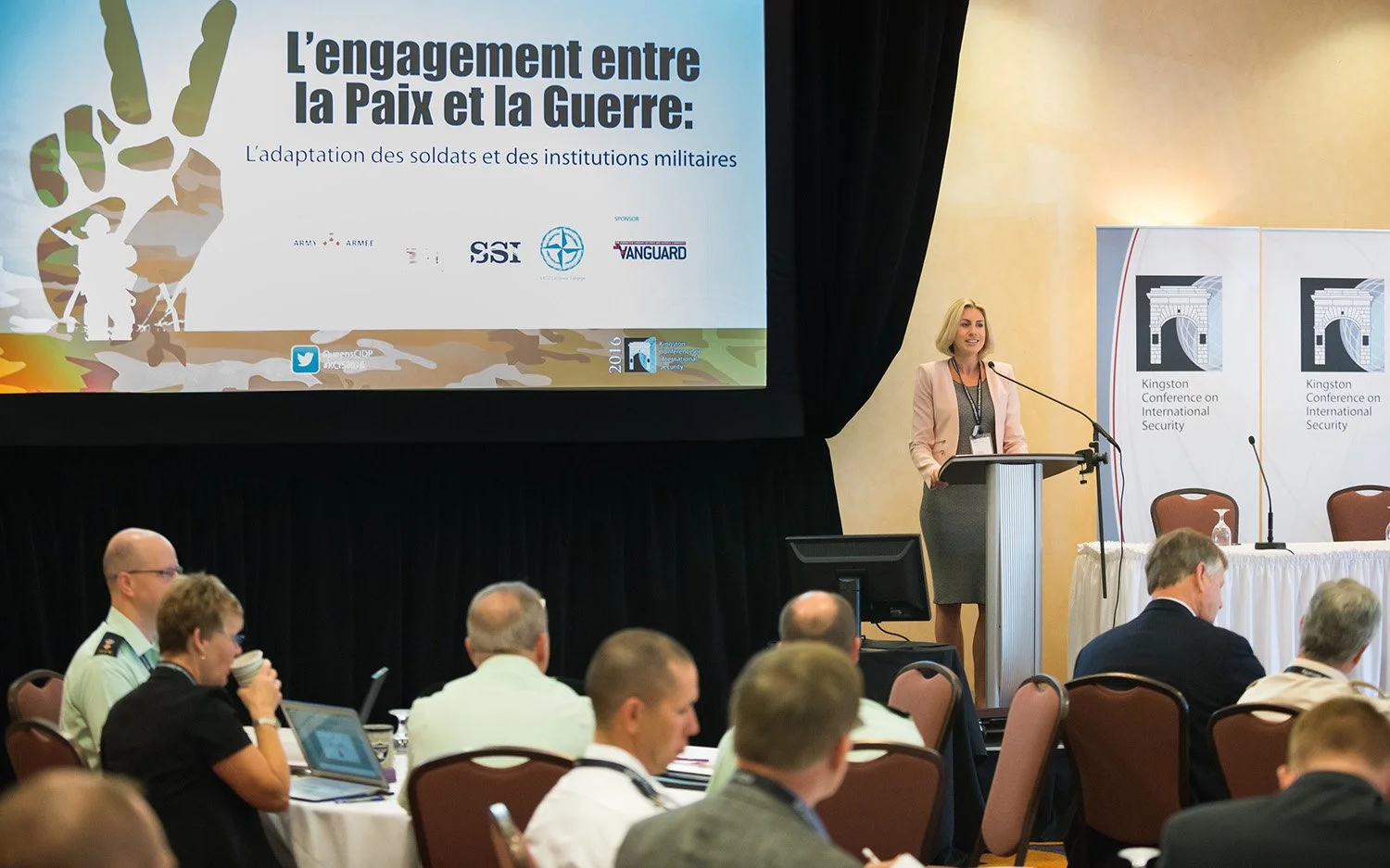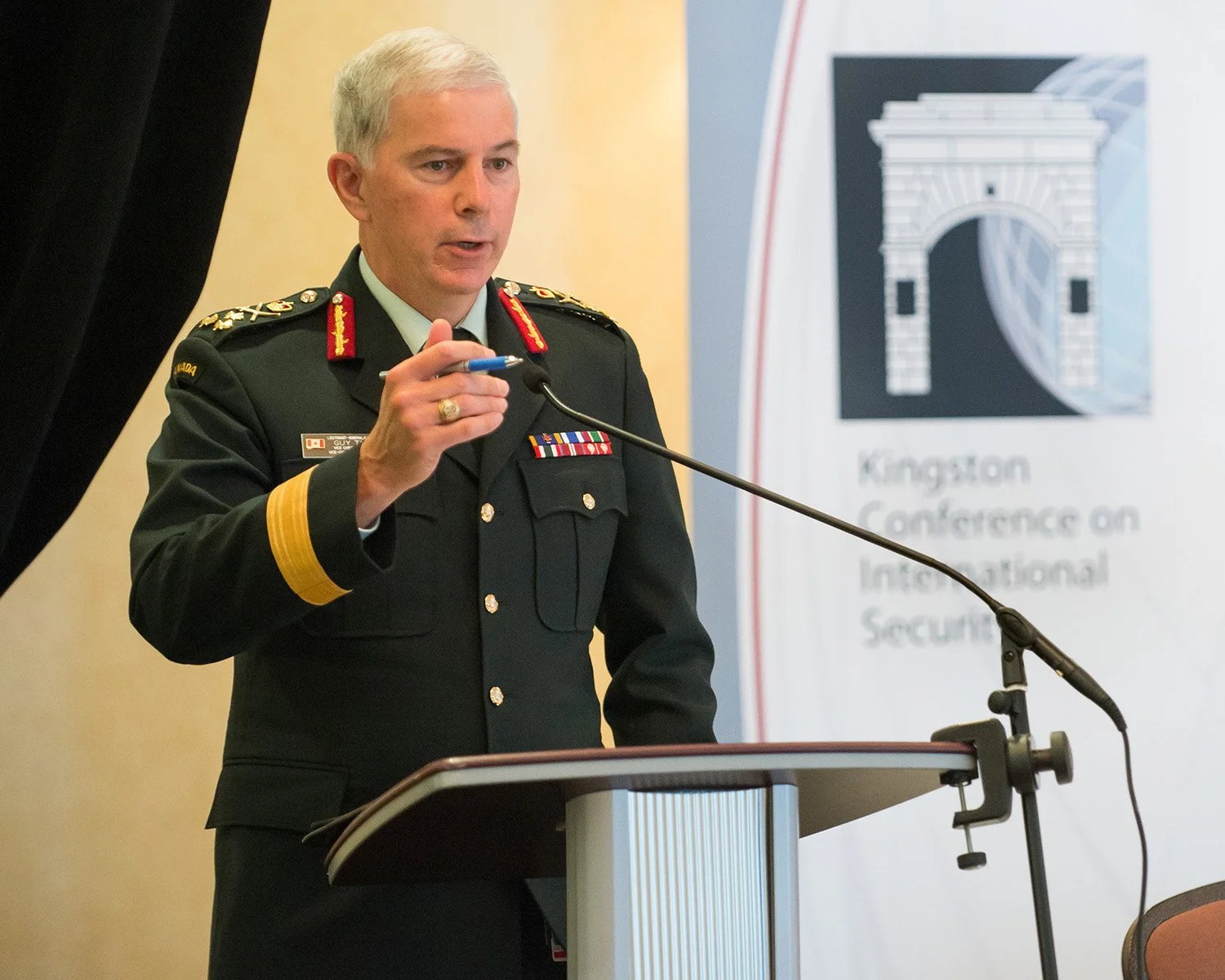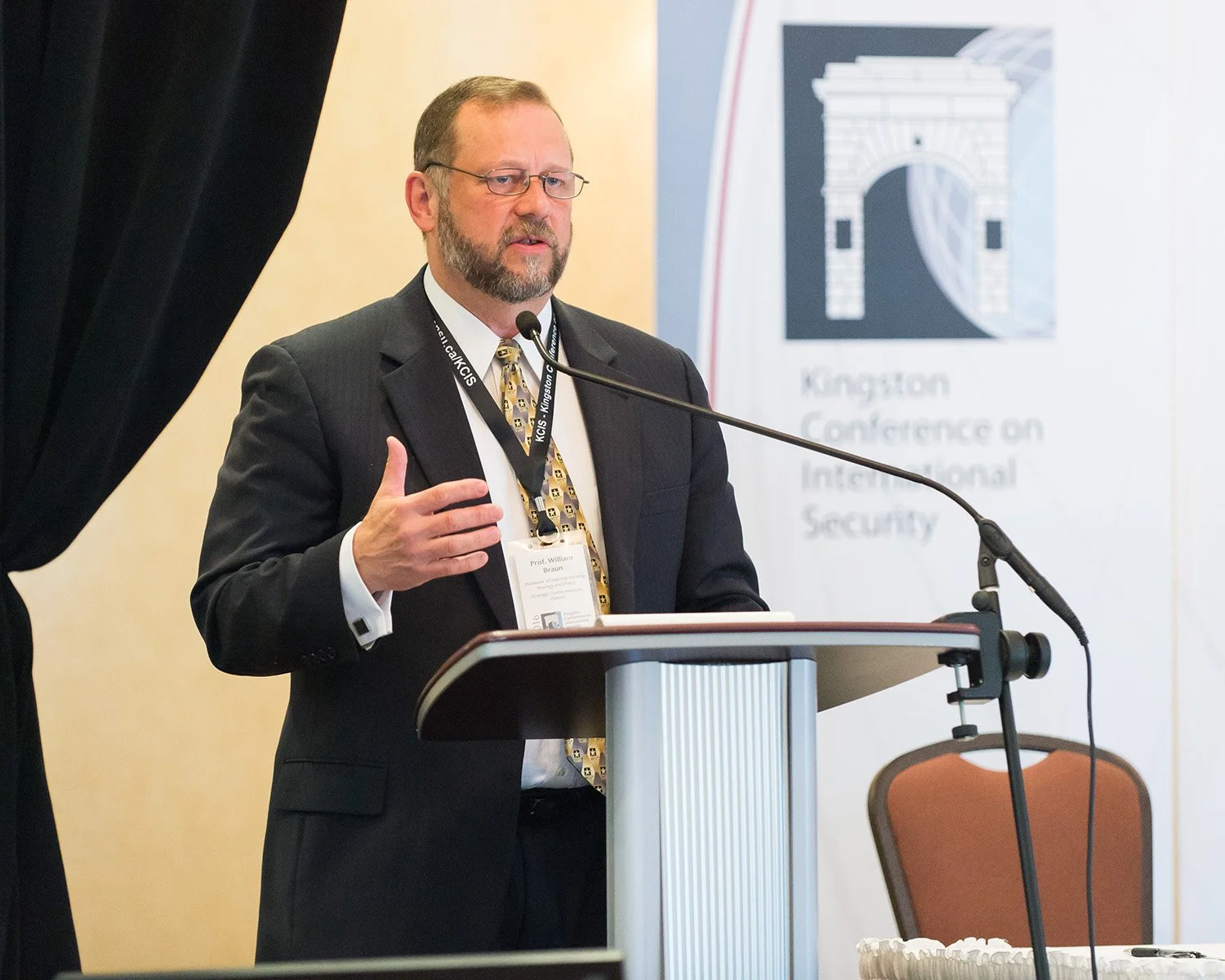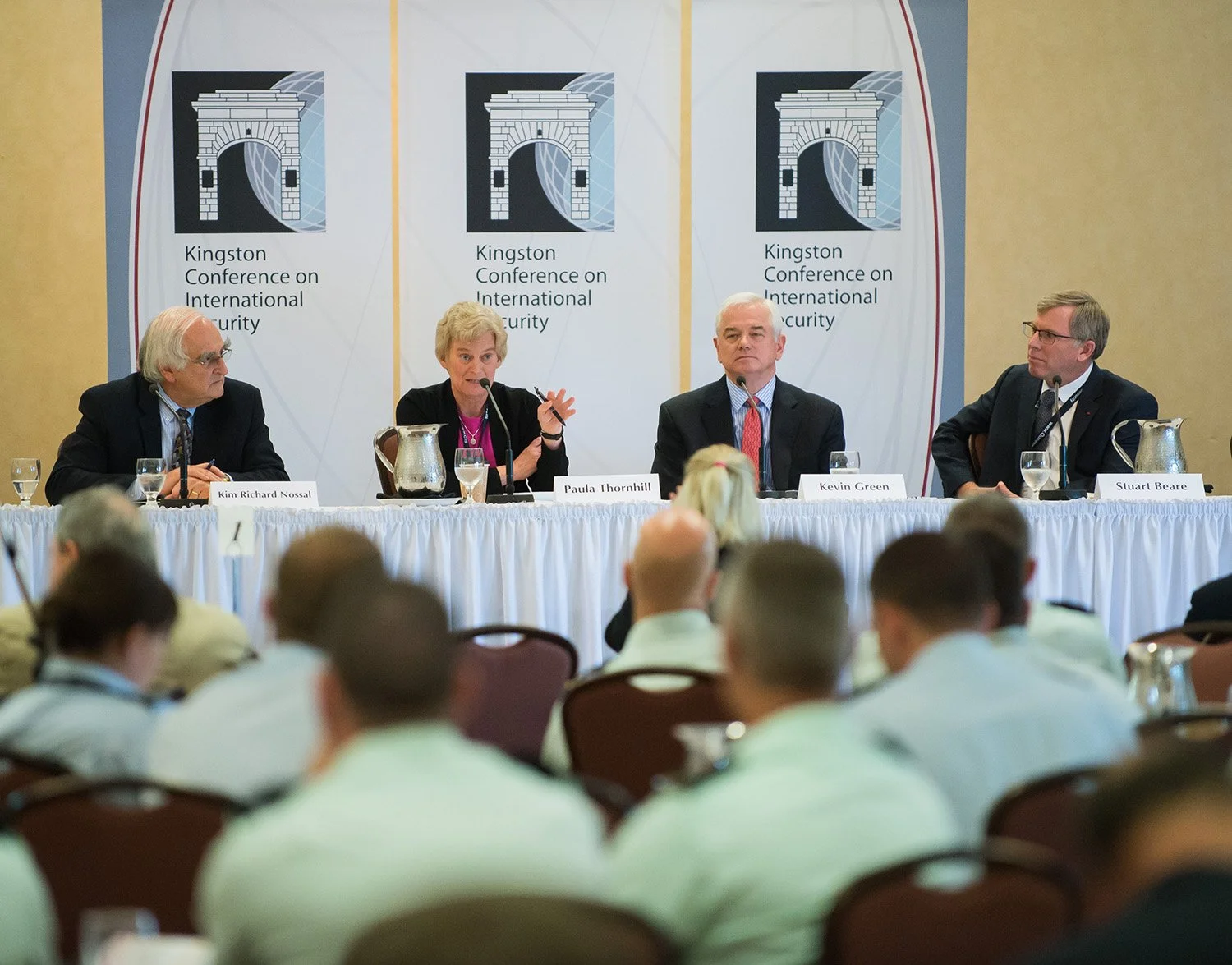Home / Conference / KCIS 2016

KCIS 2016
ENGAGEMENT BETWEEN PEACE & WAR
How Soldiers and Military Institutions Adapt
Today, military operations are conducted across a broad spectrum of conflict. How do we prepare our armed forces to achieve policy objectives in the ambiguous space between peace and war? What cultural awareness and human interactive skills would enhance the military's ability to conduct operations at the lower end of the spectrum of conflict? What are the defence policy, training and doctrinal implications?
The 2016 edition of the Kingston Conference on International Security looked at how soldiers and military organizations adapt to rapidly changing conflict dynamics, but also, how they play a part in managing peace. In this environment, land forces continue to play a highly-relevant role through engagement in the space between peace and war. Special attention was focused on how to address rivals who challenge Canada, the United States and their allies in the “gray zone” and who employ tactics that are associated with “hybrid warfare”. Topics included current security assessments, soldier competencies, professional military education, institutional adaptation and capabilities, as well as policy implications.
Documents
KCIS-2016 Executive Summary (670kb)
KCIS-2016 Proceedings Report (651kb)
Presentations
Keynotes:
Challenge to the Conference, Major-general Jean-Marc Lanthier, Canadian Army Doctrine and Training Centre
Opening Keynote Address, Lieutenant-General Guy Thibault, Vice Chief of the Defence Staff, Canadian Armed Forces
General Sir Richard Barrons KCB MBE, former Commander Joint Forces Command, British Army
Dinner Fireside Chat "Gray Zone Competition and Conflict: Challenges for Allied Security Institutions"
Moderator - Nathan Freier, National Security Studies, US Army War College
Jill Sinclair, External Engagement & Partnerships, Canadian Defence Academy
Loren DeJonge Schulman, Center for a New American Security
Panel 1: The Evolving Security Environment: Threats and Strategies
This introductory panel provided a multi-sector assessment of security trends and emerging threats. How do organizations address threats?
Andrew Carswell, International Committee of the Red Cross (ICRC) [PDF 698kb]
Alemero Retief, Group Security - Risk and Human Rights, Rio Tinto
Professor Bert Tussing, Homeland Defense and Security, US Army War College
Diego Ruiz-Palmer, Special Advisor to the Secretary General for Economics and Security, NATO HQ [PDF 536kb]
Panel 2: The Evolving Security Environment: A Military View
This panel focussed on a military perspective of security trends and emerging threats during different stages of conflict, with corresponding strategies.
Nathan Freier, National Security Studies, US Army War College [PDF 1.12mb]
Heather Hrychuk, Defence Research and Development Canada (DRDC)
Rear-Admiral Darren Hawco, Chief of Force Development, Canadian Armed Forces [PDF 880kb]
Panel 3: The Soldier: Defining and Creating Competencies
This panel identified the skills and levels of awareness needed for success and examines how the armed forces can support key competencies throughout the soldiering life-‐cycle.
Dr. Ann-Renée Blais, Director General Military Personnel Research and Analysis (DGMPRA) [PDF 372kb]
Dr. Anna Sackett, US Army Research Institute for Behavioral and Social Sciences [PDF 681kb]
Colonel Jonathan Shaw, Command Chaplain, US Army Europe [PDF 660kb]
Professor Stéfanie von Hlatky, Centre for International and Defence Policy, Queen's University (CIDP)
Panel 4: Educating for the Unknown
Investigating educational gaps and new strategies and teaching methodologies for professional development in the armed forces, this panel consisted of speakers presenting on leader development, 'gaps' in Professional Military Education training, and new teaching and education methodologies.
Major-General Eric Tremblay, Canadian Defence Academy (CDA) [PDF 1.2mb]
Major General William E. Rapp, Commandant, US Army War College
Dr. Guillaume Lasconjarias, NATO Defense College [PDF 1.5mb]
Panel 5: Institutional Learning and Adaptation
Panel 5 reviewed how to sustain forces and capabilities between and across conflicts, addressing interagency cooperation and multinational coordination.
Dr. Bastian Giegerich, The International Institute for Strategic Studies (IISS)
Caroline Leprince, Université du Québec à Montréal (UQAM) [PDF 422kb]
Friedrich Schröder, German Federal Foreign Office [PDF 404kb]
Colonel Scott Kendrick, Army Capabilities and Integration Center, US Army (ARCIC) [PDF 285kb]
Panel 6: The Political Dimension
The final panelists provided feedback and insights on the material presented during the preceding panels, with special attention to offering policy and strategy implementation recommendations.
Dr. Paula G. Thornhill, RAND Corporation
Vice Admiral, US Navy (R) Kevin Green, Robertson Blodgett Consulting LLC
Lieutenant-General (R) Stuart Beare, Tri-Leaf Insights Inc.








